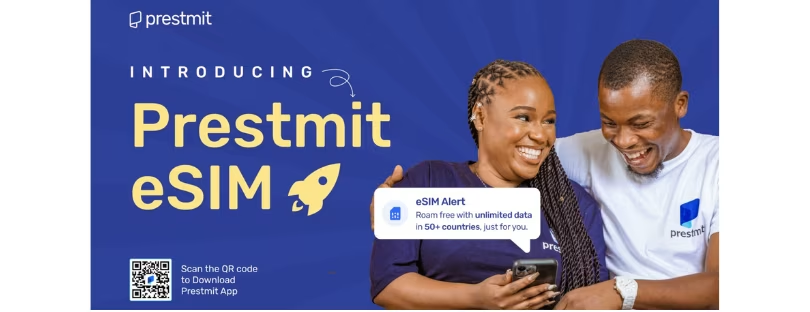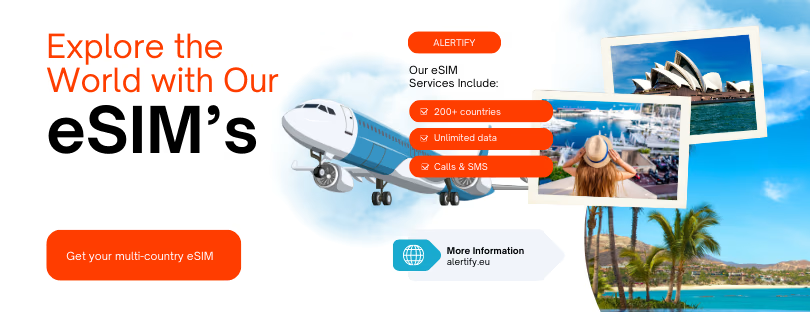
The Inevitable Rise of eSIM. A New Standard for Mobile Virtual Network Operators?
The GSMA predicts that a staggering 76% of all smartphone connections will be facilitated by eSIM technology by 2030. This ubiquitous adoption begs a crucial question: has eSIM morphed from a mere convenience into an indispensable expectation for today’s mobile consumer? A leading eSIM software provider’s CEO sheds light on why incorporating eSIM as standard practice has become imperative for mobile virtual network operators (MVNOs) to thrive in the contemporary marketplace. eSIM MVNO
For over two decades, MVNOs have been a formidable force within the telecommunications industry, experiencing exponential growth in recent years. The market has ballooned to a colossal $81.42 billion in 2024, with projections indicating a staggering doubling to a phenomenal $167.7 billion by 2034. This astronomical expansion can be chiefly attributed to a surge of non-traditional telecommunications brands venturing into the mobile service provider domain. This influx has ushered in a dynamic era of innovation, empowering consumers with unprecedented choices and fostering a fiercely competitive market landscape.
A Supercharged Competitive Arena
Historically, launching an MVNO was a herculean task, burdened by hefty budgets required to compete with established mobile network operator (MNO) brands, stringent regulatory hurdles, and substantial upfront investments. However, the landscape has undergone a metamorphosis as established MNOs have grown increasingly reliant on MVNO revenue streams. Launching mobile services has also become significantly more streamlined, thanks in large part to the advent of consumer eSIM technology in 2016.
eSIM technology serves to streamline the consumer experience, expediting launch times and minimizing operational expenditures for digital-first MVNOs. It concurrently empowers consumers with unparalleled flexibility when switching providers. The emergence of eSIM software has not only simplified the MVNO launch process but has also introduced a new layer of competition into the market by enabling entirely non-telecommunications brands to offer connectivity services.
This intensified competition compels customer expectations to soar, as consumers are presented with a plethora of choices and the ability to effortlessly compare offerings. In the ever-evolving telecommunications realm, service providers are duty-bound to cultivate an environment of innovation and ensure they consistently deliver the latest technologies. As more and more providers embrace eSIM technology, consumers become increasingly familiar with its inherent benefits – unparalleled convenience, superior flexibility, and the ability to complete onboarding entirely remotely. This widespread availability establishes a new benchmark, signifying that consumers now anticipate eSIM options from all potential providers to ensure a seamless experience.
Integrable eSIM software development kits, while undeniably advantageous for MVNOs, have inadvertently opened the door for non-telecommunications companies to expeditiously launch telecommunications services. We are witnessing a precipitous rise in the travel eSIM market, which is projected to experience a phenomenal 410% growth by 2028, ultimately carving out a significant portion of the overall eSIM market share. For MVNOs, this translates to a more competitive landscape, necessitating a heightened focus on differentiation to secure success.
The eSIM Expectation
eSIM adoption and awareness are on a clear and unwavering upward trajectory. According to GSMA Intelligence, since June 2023, a staggering 400 MNOs, MVNOs, and roaming providers have begun offering smartphone eSIM services globally. This figure represents a monumental surge from a mere 45 operators in 2018.
Consumer awareness has skyrocketed to unprecedented levels, paralleled by a corresponding rise in the penetration of eSIM-compatible devices. With Apple having already spearheaded the transition to eSIM-only iPhones in the US market in September 2022, further speculation abounds regarding a potential European rollout as early as September 2024. Apple, the undisputed leader in smartphone market share, has essentially compelled its customer base to adopt eSIM technology, and by extension, a service provider that offers it.
For MVNOs, the confluence of Apple’s eSIM-only transition and the intensified competition posed by travel eSIM applications has rendered eSIM implementation an absolute necessity.
Fulfilling the New Imperative
Whether you are a well-established MVNO or a nascent operator poised for launch, eSIM technology has undeniably become an expected service in the year 2024. But how can you implement this technology without incurring a substantial time or financial investment?
Leading eSIM software providers offer a comprehensive suite of solutions. Established MVNOs possessing a robust technology stack can leverage eSIM SDKs, offering in-app eSIM activation within a convenient kit designed to integrate seamlessly with your existing mobile application. This solution caters to any industry, enabling MVNOs to launch eSIM capabilities within a mere few weeks.
For those MVNOs lacking an existing application, alternative solutions exist. These providers offer pre-built applications pre-integrated with eSIM functionalities, enabling MVNOs to launch their services with minimal development effort. This pre-built framework streamlines the onboarding process for end-users, allowing them to activate their mobile plan and complete KYC (Know Your Customer) verification entirely remotely through a digital process.
The era of eSIM is upon us. Consumer awareness is at an all-time high, and device manufacturers are actively driving the shift. eSIM has metamorphosed from a mere convenience into an indispensable service. To stay competitive in the dynamic MVNO landscape, embracing eSIM technology is no longer optional; it’s a fundamental requirement for success.
Some of the leading eSIM enablers for MVNOs
The MVNO landscape is rapidly embracing eSIM technology, and several companies are at the forefront of providing the tools and infrastructure needed for seamless implementation. Here’s a look at some key players:
-
Thales: A trusted industry leader in secure eSIM solutions. Thales offers MVNOs a secure and reliable eSIM infrastructure, including:
-
Secure eSIM Hardware: Thales provides certified and secure eSIM hardware that safeguards sensitive subscriber data and protects against unauthorized access.
-
Secure Connectivity Management: Thales’ solutions ensure secure communication between MVNOs and eSIM profiles, guaranteeing reliable and trustworthy connectivity for customers.
-
- Truphone: A global mobile communications leader offering a robust eSIM platform specifically tailored for MVNOs. Truphone’s platform can:
-
Simplify Onboarding: Streamline the process of adding new MVNO subscribers through a user-friendly interface for eSIM activation and provisioning.
-
Lifecycle Management: Offer tools for managing the entire lifecycle of an eSIM profile for an MVNO customer, including subscription changes, profile updates, and remote provisioning.
-
- Giesecke+Devrient (G+D): A well-established security company offering a comprehensive eSIM solution focused on personalization and lifecycle management. G+D empowers MVNOs with:
-
Personalized eSIM Experiences: G+D’s technology allows MVNOs to personalize the eSIM experience for their customers, branding the profiles and offering unique features.
-
Lifecycle Management Tools: G+D provides tools for MVNOs to manage the entire lifecycle of eSIM profiles, including provisioning, activation, and deactivation, streamlining operations.
-
- Mobilise: A prominent provider of eSIM software solutions. Mobilise offers MVNOs a comprehensive suite of tools, including:
-
-
eSIM SDK: This in-app development kit allows established MVNOs with existing mobile applications to integrate eSIM activation functionality directly within their app. This streamlines the onboarding process for new customers and reduces launch times for eSIM services.
-
eSIM as a Service (eSIMaaS): Designed for MVNOs without existing mobile apps, eSIMaaS provides a complete eSIM solution. It integrates seamlessly into the MVNO’s platform, allowing for remote onboarding and self-service management of eSIM profiles for customers.
-
These are just a few of the leading eSIM enablers for MVNOs. Each company offers a distinct set of capabilities, allowing MVNOs to select the solution that best aligns with their specific needs and target audience.











